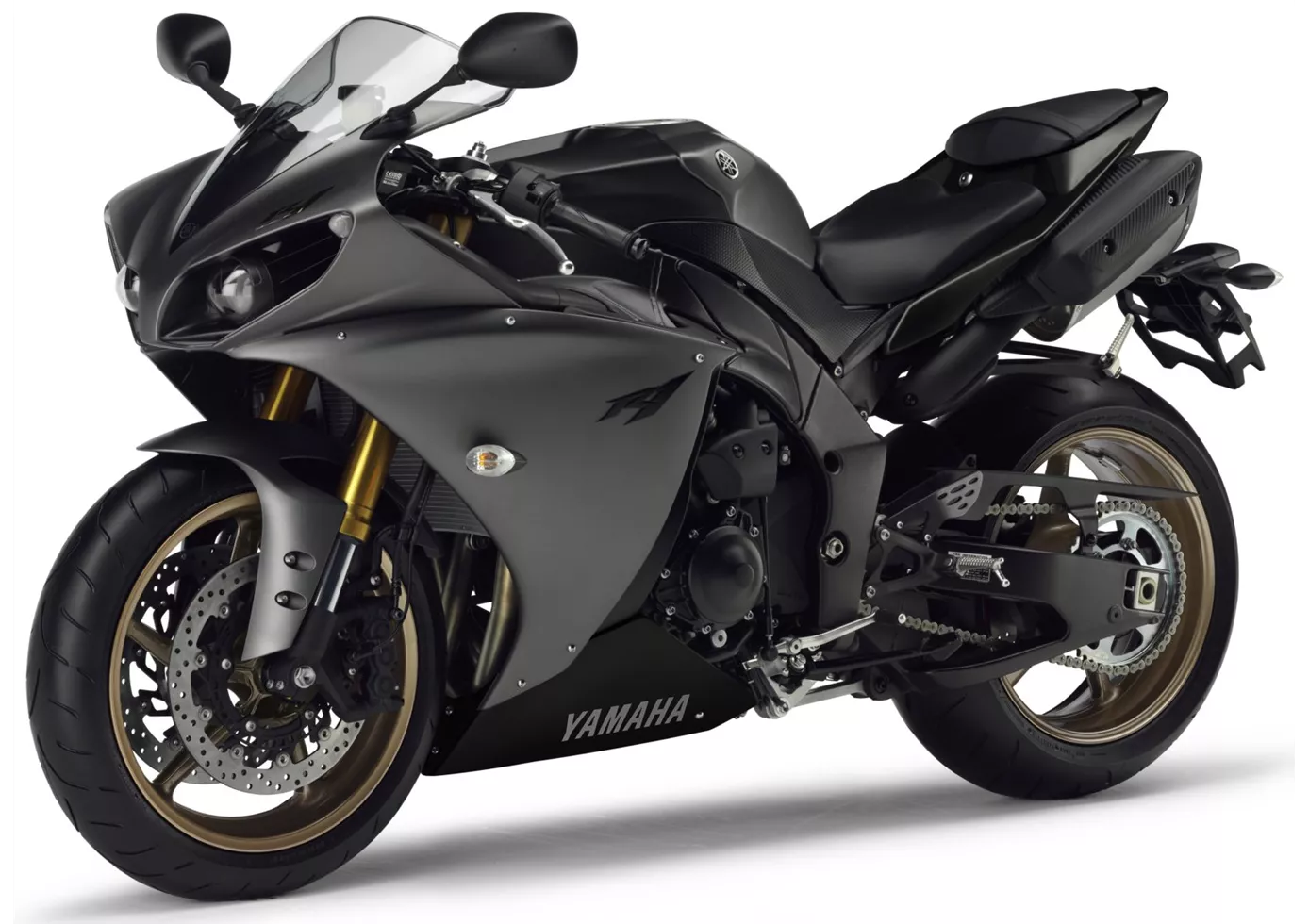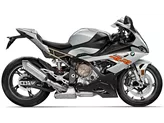BMW S 1000 RR 2014 vs. Yamaha R1 2014

BMW S 1000 RR 2014

Yamaha R1 2014
Vue d’ensemble - BMW S 1000 RR 2014 vs Yamaha R1 2014
The BMW S 1000 RR 2014 and the Yamaha R1 2014 are both high-performance supersport motorcycles that offer impressive specifications and features.
Starting with the engine and drive train, the BMW S 1000 RR has a bore of 80 mm and a stroke of 49.7 mm, while the Yamaha R1 has a slightly smaller bore of 78 mm and a larger stroke of 52.2 mm. In terms of power, the BMW S 1000 RR boasts 192 HP, while the Yamaha R1 offers 182 HP. The torque of the BMW S 1000 RR is 112 Nm, while the Yamaha R1 has a torque of 115.5 Nm. Both motorcycles have 4 cylinders and a displacement of around 1000 ccm.
Moving on to the suspension, the BMW S 1000 RR features a telescopic fork in the front, while the Yamaha R1 has an upside-down telescopic fork. Both motorcycles have an aluminum frame, with the BMW S 1000 RR having a twin tube frame and the Yamaha R1 having a Deltabox frame. The front brakes on both motorcycles are double disk.

BMW S 1000 RR 2014
In terms of dimensions and weights, both motorcycles have a front tire width of 120 mm and a front tire diameter of 17 inches. The rear tire width is also the same for both, at 190 mm, with a diameter of 17 inches. The wheelbase of the BMW S 1000 RR is 1432 mm, while the Yamaha R1 has a slightly shorter wheelbase of 1415 mm. The seat height of the BMW S 1000 RR is 820 mm, while the Yamaha R1 has a slightly higher seat height of 835 mm. The kerb weight of the BMW S 1000 RR is 204 kg, while the Yamaha R1 weighs slightly more at 206 kg. The fuel tank capacity of the BMW S 1000 RR is 17.5 liters, while the Yamaha R1 has a slightly larger fuel tank capacity of 18 liters.
Now, let's discuss the strengths and weaknesses of each motorcycle. The BMW S 1000 RR is known for its powerful engine and superior electronics package, making it a force to be reckoned with on the road or track. It also features a superb shift assistant, making gear changes smooth and effortless. Despite its high performance, the BMW S 1000 RR is surprisingly easy to ride, making it a versatile option for both experienced riders and those new to supersport motorcycles.
On the other hand, the Yamaha R1 is praised for its agility and strong brakes, allowing for precise handling and quick stops. Its chassis is also highly regarded, providing stability and control at high speeds. The Yamaha R1 is often seen as unique and exclusive due to its idiosyncratic engine, which sets it apart from other motorcycles in its class.

Yamaha R1 2014
However, the BMW S 1000 RR does have some weaknesses. In the fully equipped version, the price can skyrocket, making it less accessible for some riders. Additionally, stability can be a bit tricky, requiring skilled handling to fully harness its power. Some riders also criticize the packages offered by BMW, as they are often focused on profit maximization rather than customer benefits.
As for the Yamaha R1, its main weakness lies in its appearance. The wide tail design might not satisfy all tastes, and some riders may prefer a sleeker and more streamlined look.
In conclusion, both the BMW S 1000 RR 2014 and the Yamaha R1 2014 are impressive supersport motorcycles with their own strengths and weaknesses. The BMW S 1000 RR offers a powerful engine and advanced electronics, while the Yamaha R1 excels in agility and braking. Ultimately, the choice between the two will depend on the rider's preferences and priorities.
Caractéristiques techniques BMW S 1000 RR 2014 par rapport à Yamaha R1 2014
Avantages et inconvénients en comparaison
Avantages et inconvénients en comparaison
BMW S 1000 RR 2014

Les acheteurs de BMW S 1000 RR 2015 sont plus proches que jamais d'une machine du Championnat du monde de Superbike et pourront ainsi rouler plus vite que jamais.
Yamaha R1 2014

La Yamaha YZF-R1 continue d'enthousiasmer par ses performances équilibrées - le moteur 1000 en particulier, avec son décalage extravagant des pivots de course, ne sert pas seulement à déployer une puissance énorme, mais assure également un son magnifique !
Comparaison des prix Prix moyen du marché BMW S 1000 RR vs Yamaha R1
There are a few key differences between a BMW S 1000 RR 2014 and a Yamaha R1 2014. It takes less time to sell a BMW S 1000 RR with 56 days compared to 74 days for a Yamaha R1. Since model year 2010 1000PS.de editors have written 135 reviews for the BMW S 1000 RR and 80 reviews for the Yamaha R1 since model year 2005. The first review for the BMW S 1000 RR was published on 4/16/2008 and now has more than 4,000 views. This compares to more than 3,900 views for the first review on Yamaha R1 published on 4/28/2003.




















